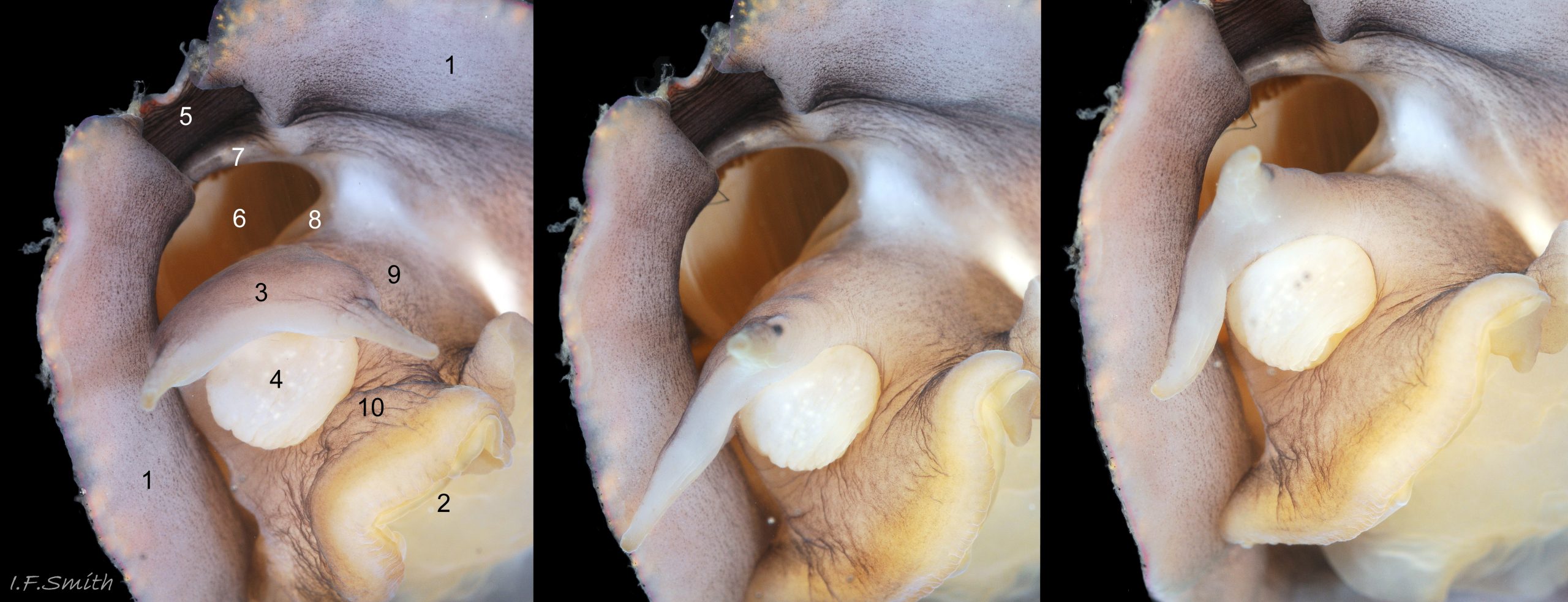As well as covering the shell, the mantle lobes (1) extend beyond the shell to create a peripheral cavity that covers the head and foot (2). When not in feeding position, the head (3) is flat and rectangular with long, slender, smooth cephalic tentacles on the anterior corners and no visible snout projecting between the tentacles. On the ventral face of the head there is an opening to a sac containing an inverted white proboscis. When ready to feed, the proboscis (4) is engorged and everted from the opening. After further elongation, its mouth is applied to colonial or unitary ascidians for the radula within the proboscis to cut out pieces of test.
Within the shell, above the head and close to the respiratory siphon (5) there is a true mantle cavity (6), with an opening restricted by the shell rim (7) and mantle (8), which contains a substantial bipectinate osphradium and a large unipectinate ctenidium. A glimpse of the cavity and its contents may sometimes be had on a live specimen, as above, but dissection is required for a clear view (see image 20).
The body (9), head and dorsal surface of the foot (10) are a similar colour to the ventral surface of the mantle. Llŷn Peninsula, Wales, March 2016.
18 Marsenia perspicua

